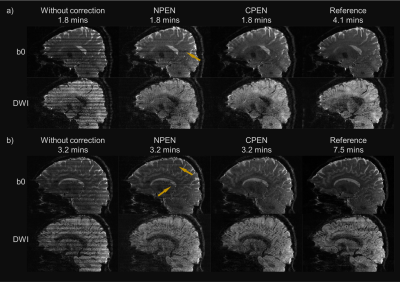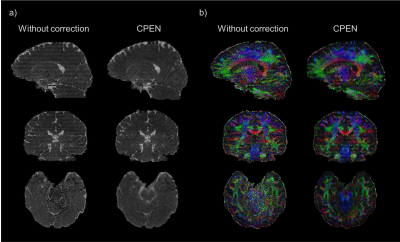Jieying Zhang1, Simin Liu1, Yuhsuan Wu1, Yajing Zhang2, and Hua Guo1
1Center for Biomedical Imaging Research, Department of Biomedical Engineering, Tsinghua University, Beijing, China, 2MR Clinical Science, Philips Healthcare, Suzhou, China
1Center for Biomedical Imaging Research, Department of Biomedical Engineering, Tsinghua University, Beijing, China, 2MR Clinical Science, Philips Healthcare, Suzhou, China
CPEN
outperforms NPEN in boundary artifacts correction for SMSlab. The results of
CPEN shows fewer residual artifacts and higher SNR, and its computation is much faster. It’s meaningful when a large number of DWI volumes are acquired.

Figure
3. The correction results of the images with 1.3mm (a) and 1mm (b) isotropic
resolutions. The uncorrected images (1st column), SMSlab NPEN (2nd
column), CPEN (3rd column) and the
reference images (4th column) are shown. In each sub-figure, the upper row
shows the b0 images, and the bottom row shows the b=800 s/mm2
images. The acquisition time is marked on top of each column. The nominal SNRs
of the reference and the SMSlab images are comparable.

